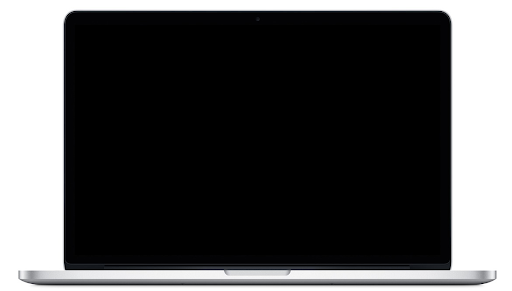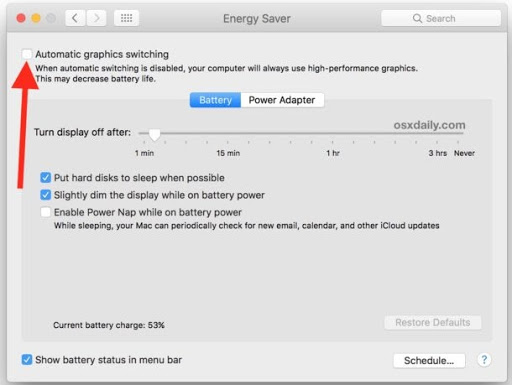Imac Just a Black Screen and Not Responding
A blank screen (black, blue, or gray) should appear once or more during startup. If you see your MacBook Pro booting black screen something might be a miss.

In this guide, we highlight 12 solutions to Fix MacBook Pro booting black screen
Why is my MacBook Pro booting black screen?
Nothing can cause panic during system booting of a Mac, like a screen completely going black. Should you encounter a MackBook black screen while rebooting your MacBook Pro, the following could be the causes:
- Software or hardware incompatibility : this can occur if you recently upgraded to a new macOS, or updated hardware or firmware. This is because the new updates could come with incompatibility issues, unsolved bugs, or very large disk space consumption.
- Power issues : MacBook can boot into a black screen if there is not enough or rated power.
- Poor contact between hardware and firmware : the contacts between hardware and firmware are damaged, loose, or dusty, the computer won't start up normally.
- Cables not connected
- Third-party apps that expand the screen
But these are not the only reasons. There can be some unknown reasons caused by a motherboard failure. Depending on the age and model of your Mac computer (Be it a Mac mini, iMac, MacBook Air, or a MacBook Pro), except for the black screen of death, you might see a blank, gray, or blue screen.
All in all, there are lots of troubleshooting ideas to fix the MacBook Pro booting black screen issue.
Fix MacBook Pro Booting Black Screen
To fix the MacBook Pro booting black screen problem, you will start with simple solutions to complex and technical solutions
Note: These solutions apply to MacBook Air too.
Solution #1: Check if the power is on
Is your power on? Is power being transferred from the socket to you Mac? Examine if your charger cable is intact and if your Mac is charging. Is the green light on?
To rule out any power issues, listen closely if your Mac produces any noise — from the hard drive or fans.
If your Mac was off due to power, try charging it for no less than ten minutes before attempting to power it back on.
If you still see the black screen on Mac, something else could be the problem.
Solution #2: Disconnect all peripherals
The only accessories that should be connected to your Mac when you try to solve the black screen on Mac issue should be the charging cable and adapter.
Disconnect all the accessories and devices connected to the Mac. Remove all external devices such as printers, flash drives, phones, and other external drives.
These peripherals may start their own dialogues which could interfere with your Mac's display settings.
If this doesn't solve the problem, something else could be the problem.
Solution #3: Adjust your display's brightness
It's possible you unknowingly pressed the brightness keys on the keyboard so your screen dimmed down. Or it could have been your cat.
Use F1 and F2 buttons to light black screen on your Mac.
Solution #4: Force Reboot your MacBook Pro
You can force restart your Mac to solve the issue.
If you've established that the Mac booting black screen issue lies in the display, force restarting the device can be a solution. (if you are not sure, skip this process).
Force restarting the Mac can fix bugs and errors.
Here's how:
- Press and hold the Power key for about 6 seconds.
- Wait for the Mac to shut down
- Press the Power key again to start it
Solution #5: Reset Mac's NVRAM settings
NVRAM stands for non-volatile RAM.
This is a functionality that stores in-memory settings for hard drives, speakers, screen display, primary startup disk, etc.
NVRAM reset can effectively set back to factory (default) settings everything connected with the boot process, including those remotely connected.
To reset Mac's NVRAM settings:
- Turn off your MacBook Pro.
- Press the Power key.
- Wait for your Mac to start loading.
- When you hear a startup sound, press and hold Cmd + Option + P + R .
- Keep pressing the keys until you hear a second startup sound.
Solution #6: Reset the System Management Controller
Resetting the SMC will dump and reset settings for anything power management related. It resolves among other problems with things like heat, sleeping problems, fans, and of course, Mac black screen display issues.
To reset the SMC on MacBook Pro or MacBook Air (with nonremovable battery):
- Shut down the Mac
- Connect the Mac to power (if it is not connected). Ensure to use your MagSafe adapter.
- While the Mac is off, press the Shift+Control+Option+Power keys together at the same time and hold down for a few seconds
- Release all keys at the same time
- Boot the Mac as usual and watch out what happens

When the Mac boots, hopefully, the Mac black screen will have gone away and you're back to normal.
Solution #7: Keypress (Keyboard) Sequence
If you Mac boots, the black screen may go away and the MacBook Pro or MacBook Air may go back to normal, however, if it doesn't, try a keypress sequence to ditch the black screen.
If your Mac is powering on but the screen stays black, try the keypress sequence:
- Press the power button (OFF) once, bringing an invisible dialog box on the MacBook Pro black screen
- Press the 'S' button - shortcut for sleep on Mac
- Force a hard shutdown by holding the power button for 4 seconds
- wait for about 16 seconds
- Press the power button (OFF) to turn the MacBook Pro on again
This process is not common but has worked for many
Solution #8: Reset the PRAM
If the above two tricks failed (solution #6 and Solution #7), a PRAM reset can often be the solution to the MacBook pro booting back screen.
Mac's PRAM is a memory that holds some settings for your Mac.
The settings in the PRAM carry forward even if you shut down or restart Mac. If they get corrupted somehow, it can cause problems like the black screen on Mac.
This is why resetting the PRAM is a potential solution to the black screen on boot. PRAM reset is almost similar to SMC reset. To reset the PRAM:
- Reboot the Mac
- As soon as you hear the boot chime, hold down the Command+Option+P+R keys together
- When you hear the boot sound again, the PRAM has been reset
- Let the Mac boot again as usual
Up to this point, Mac should boot again normally and should no longer have the black screen display.
Solution #9: Boot into Safe Mode
Sometimes the black screen on Mac is as a result of corrupt information on the startup disk. A simple solution for this is to force your Mac to run diagnostics on the disk by booting it in safe mode.
To start-up in safe mode:
- Power up or restart your Mac
- Hold the Shift key until the Apple logo appears on the screen.
- Let go of the Shift key and let the system start-up.
The boot is likely to take longer than normal because it's running diagnostics during the boot sequence. Let it finish the safe-mod boot to completion.
After it finishes starting up, restart again to leave the safe mode and start normally to see if the Mac black screen problem has been fixed.
Solution #10: Enter Password, Hit Return
This is a surprising alternative that works when the Mac booting black screen problem persists.
All you need to do is enter your regular login password as usual and hit the Enter/Return key, the Mac boots up as usual and then you're good to go. Try this out, it might work for you:
- When the Mac boots into the black screen, enter the password your login password on Mac as usual
- Hit the Enter/Return key
If this works, you'll know rather quickly because the black screen will give way to the regular Mac OS desktop.
Solution #11: Turn Off Automatic Graphics Switching
This solution works for black screens on dual-GPU MacBook Pro only.
Some MacBook Pro models have dual graphics cards that switch automatically. Sometimes, those models can boot directly to a black screen.
Often, to remedy this issue you'd simply disable automatic graphics card (GPU) switching on MacBook Pro:
- From the Apple menu choose "System Preferences"
- Go to "Energy Saver"
- Toggle the switch next to 'Automatic Graphics Switching' to turn that off

- Restart the Mac normally
Solution #12: Re-install the macOS
This is the last resort.
If all these solutions do not work, there could be a bigger problem than simple hardware and software solutions. Re-installing the macOS can solve the issue once and for all.
You can decide to either install the same MacOS product or acquire a new macOS and install it on your Mac.
Wrapping Up
Did any of these solutions help you fix the MacBook booting black screen issue?
If you run into this unusual issue with your Mac, use one or all these solutions to sort the problem. These solutions work for MacBook, MacBook Pro, MacBook Air, iMac, and Mac Mini.
Do you need any Mac product? You can get all Mac products that you may need here , including Office for Mac and Windows for Mac!
You May Also Like:
> How to Fix "iPhone is Disabled. Connect to iTunes"
> How to Turn Off the Find My iPhone Feature
> Power Bi for Mac
Imac Just a Black Screen and Not Responding
Source: https://softwarekeep.com/help-center/fixed-macbook-pro-booting-black-screen
0 Response to "Imac Just a Black Screen and Not Responding"
Post a Comment